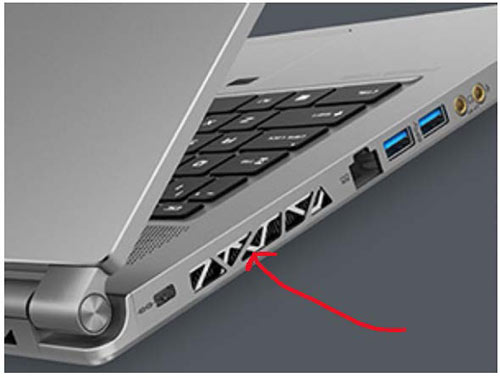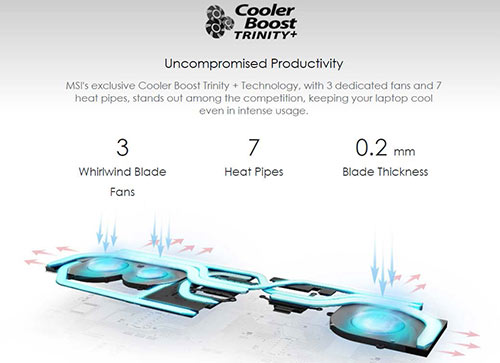The School of Architecture at Mississippi State University requires the purchase of an appropriate laptop computer and software. On entering the design studio sequence, each student is required to purchase a laptop computer and software that meet the specifications below. The laptop and required peripherals must be up and running by November 1 of the fall semester or by June 10 of summer I term.
The School of Architecture at Mississippi State University was the first in the country to require architecture students to purchase a laptop for use in the design studio environment in the early 1990s (as noted in the Carnegie Boyer Report and the Chronicle of Higher Education). With this in mind, we understand the rapid pace at which the computer industry upgrades and improves the performance of new technology. Please understand that this guideline is only a starting point for today, and as technology changes you may need to upgrade and possibly replace older technology in the near future. In turn, the school will provide the high-end printing, plotting, scanning, and network services to support student-owned machines.
Computer Buying Guide
Overview
- Memory (RAM): 16 GB recommended
- Graphics Cards: GTX series: GTX 1070 or better
- CPU: Intel i7 Quad Core, AMD Ryzen 7 or better
- Hard Drives: SSD 256 GB minimum, 500 GB recommended, no HDDs
- Screen quality: 15” IPS 95%- 100% sRGB, no TN screens
- Mouse + other inputs: Full sized mouse, travel size ok for small hands
- Software + other costs to consider: Adobe software subscription ($240/yr) Rhino $195 one-time cost
1 – Memory – 16 GB recommended
RAM, random access memory, is the short-term memory storage your computer uses while it performs tasks. Having enough RAM is critical to programs running smoothly and quickly. We strongly recommend a laptop with 16 GB RAM.
2 – Graphics Cards – GTX 1070 or better
A graphics card – also referred to as video card, graphics processing unit or GPU – is a secondary processing unit that computes graphical tasks. NVIDIA is the main graphic cards brand. Most computers come with a weaker GPU that is integrated into the CPU that handles everyday tasks, referred to as integrated graphics, almost always an Intel product. However, you will need a separate “dedicated” graphics card to handle some of the major software you will use in architecture school. Here is a condensed list of good options: GTX series 1070, 1660, 1080 or RTX series 2060, 2070, 2080. You will want at least 4 GBs of memory in your graphics card; 6 GBs is better.
Note: The larger the number, the newer the model. GTX 1660 is an odd exception, where it is a newer low-budget model but cheaper than the 1080 with lesser specs. GTX series are more budget friendly. RTX has additional capacities for more creating more realistic imagery but is more expensive.
MORE OPTIONAL INFORMATION ON GPUs
NVIDIA has four tiers of products commonly sold, the GeForce MX, GeForce GTX, GeForce RTX and QUADRO lines. Each line has multiple generations, for example RTX 2060, RTX 2070, RTX 2080.
- MX is more for casual gamers and not suitable for demanding software.
- Quadro lines are designed specifically for professionals and long-term durability but are highly expensive compared to buying a GTX or RTX with the same capacities. If you are looking at a laptop with Quadro cards, make sure to check the PassMark score.
- GTX is the standard line of GPUs.
- RTX is its higher-end successor with additional features for more realistic imagery creation and some performance increases.
GPUs for laptops are designed to use less power and produce less heat than PC graphics cards. These laptop or “mobile” chips are advertised as “Max-Q” or marked with an “M” at the end of model number and are generally weaker than their PC counterpart. So, a GTX 1660 Max-Q has different speeds and specs than a GTX 1660. This is not to deter you from Max-Q hardware. They are better designed to function inside a laptop where overheating is critical. Just something to understand when researching different hardware to not mistake the capacities of a PC GPU model for what you are buying.
When shopping and comparing laptops, you can use PassMark scores to gauge different GPUs. You will want a GPU with a PassMark score of around 10K (recommended), at minimum above 6K. These scores are very rough averages, so a 9K score is fine. Link to Passmark GPU comparison
3 – CPU – Intel i7 Quad Core or AMD Ryzen 7
A central processing unit, CPU, is the brains of your computer. Intel and AMD are the two major CPU brands. Intel sells four lines, the i3 and i5 series with dialed down capabilities, i7, and the newly released i9. The 8th, 9th and 10th generations of the i7 line are fast, capable and recommended. There is not much of a performance difference between the three generations. AMD’s Ryzen 7 series and Ryzen 9 series are also powerful, cost-effective CPUs that tend to be cheaper, since they are a smaller brand name.
CRITICAL NOTE: The performance of your GPU and CPU is directly dependent on the cooling system of your laptop. CPUs and GPUs produce heat especially under demanding loads you will be putting them though. If your laptop has a poorly designing cooling system, these components will at best lower their performance just to prevent overheating. At worst, overheating will reduce the life of your laptop.
Things to look for:
- Vents, vents, and vents. If you do not see side or back vents like the below image, be suspicious. Often ultra-slim or chic designs will have the vents only on the bottom side of the laptop which is easily blocked.

- Check out the manufacturer web page for the specific model you are looking to buy. You are buying a high-end work machine. If they are not showing off the cooling system, it is probably something they are not proud of. Be suspicious if you only see one fan. Two fans are typical. Below is a screenshot of the cooling advertisement for the MSI Creator laptops.

- Check out reviews such as notebookcheck.com where the heat inside the laptop is measured as the device is tested under a demanding software load. You can start by searching “laptop x overheating review,” since several websites do temperature tests. A side benefit is these reviews also include in-depth criticism and reviews about every aspect of the laptop, such as screen quality, durability, etc.
MORE OPTIONAL INFORMATION ON CPUs
One metric CPUs are advertised by is the number of cores. Cores in a CPU are like workers in an office. You can assign each worker a different task and get more done quickly or have multiple workers on the same task. So, a CPU with multiple cores can run different programs at once or engage multiple cores to complete one task. However, there is limited return and benefit to the number of cores in your CPU. Most software you will use in architecture school, such as Photoshop, is only capable of using one core at a time. It is analogous to having a task too complicated to split up between workers. So, if you are working in Photoshop, having 8 cores is not going to be faster than 4 cores. The extra cores are just sitting around. Having four cores is still important, allowing you to have more than one program open at a time. There’s little value in spending for a greater core count in this major. What is more critical is the performance of the single core. This is typically measured by the base speed (normal speed under an average load) and boost speed (a higher speed for demanding tasks). You will want a base speed of 2.6 GHz or higher and a boost speed of 4 GHz or higher.
4 – Hard Drive – SSD 256 GB minimum, 500 GB recommended, no HDDs
HDD drives are artifacts of the stone age. SDD drives are magnitudes faster and more durable. You will need an SDD to house all your software and the files for projects that you are actively working on. An SSD + HDD configuration is common in laptops, but you will likely derive little use of the HDD.
You can either buy a laptop with a large SSD built in or buy an external SDD that plugs into your machine. The main issue with external SSD is they can get lost easily. You will want at a least 256 GB SDD in your laptop to be able to house all your software, but you can install additional software onto the external SSD. You will likely need around a 1 TB (around 1000 GBs) of total storage for both software and project files. We recommend built-in storage of 500 GBs and using an external SSD to store older files or for bigger projects. You will not need the external SSD until the third-year studio.
5 - Screen quality - 15” IPS 95%- 100% sRGB, no TN screens
IPS screens display color more accurately and are readily available. The percentage of sRGB refers to the range of colors the display can produce according to a universal standard across devices.
6 - Mouse + Other Inputs Full sized mouse, travel size ok for small hands
Most of the software you will be using requires a mouse. A lot of the mice you will find online are travel-sized and relatively small. If you have small hands, it works out. Otherwise, be sure to get a full-sized mouse as you will be using it for hours on end. Mice also get lost easily, especially wireless mice. You will want to have a second back-up mouse. Make sure if you use a wireless mouse to have extra batteries.
7 – Software Needs Adobe software subscription ($240/yr) Rhino $195 one-time cost
You will be using a lot of different software, some free for students, others at a reduced price for students. In first-year studio, you will be using the Adobe Creative Cloud software suite and Rhino. Adobe is a subscription-based software where you pay $20 monthly or $240 yearly. Rhino is a a one-time fee of $195. For the most part, you will not need to purchase other software due to the prevalence of free student licenses. Microsoft Office is free for MSU students.